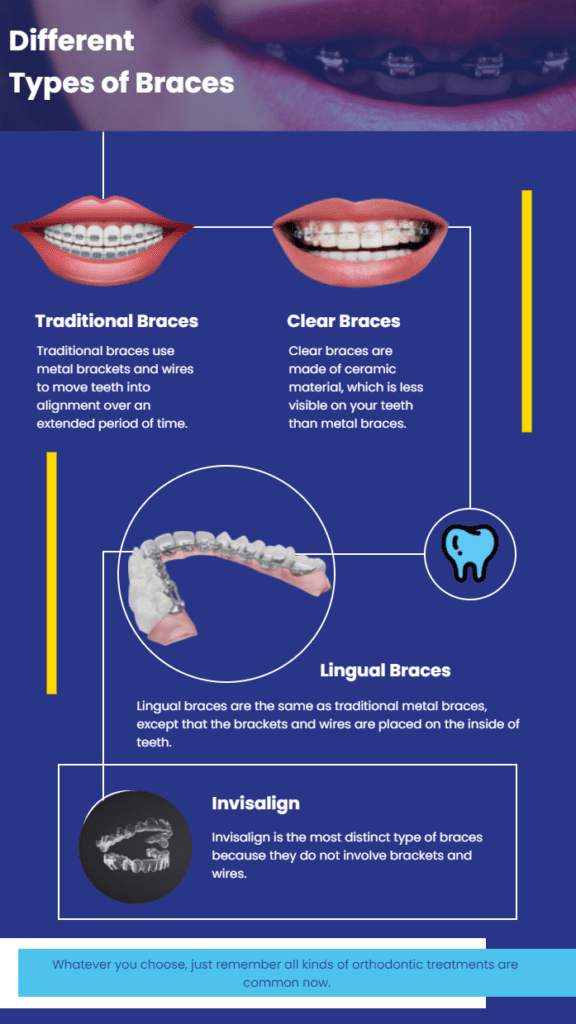Comprehensive Guide to Orthodontics Procedures for Remedying Oral Misalignments
In the realm of orthodontics, the trip to attaining a perfectly lined up smile entails a myriad of treatments tailored to fix dental imbalances. From typical braces to unnoticeable aligners and even medical alternatives, the area of orthodontics offers a variety of options to attend to differing degrees of dental irregularities. Understanding the complexities of each treatment, including their systems, advantages, and possible downsides, is crucial in making informed decisions about one's orthodontic treatment. As we navigate through the extensive guide to orthodontic procedures for fixing dental imbalances, the detailed information of each approach will unravel, clarifying the path towards a harmonious and useful oral positioning.
Orthodontic Procedures Review

Regular changes and monitoring are important components of orthodontic therapy to make certain progression is on track and to make any necessary adjustments along the method. By going through orthodontic treatments, people can not just attain a straighter smile yet additionally boost their total dental wellness and feature.
Typical Dental Braces: Just How They Function
When considering orthodontic therapies for dental misalignments, typical braces stand out as a tried and true approach for fixing teeth placing. Typical braces are composed of braces, wires, and bands that work with each other to use continual pressure on the teeth, progressively relocating them into the preferred placement.
One key aspect of how standard braces job is the process of bone makeover. As pressure is used to the teeth with the dental braces, the bone bordering the teeth is improved to sustain the new tooth settings. This improvement is important for the long-lasting security of the dealt with placement. Clients will need routine changes at the orthodontist's workplace to ensure the braces continue to apply the appropriate pressure for efficient teeth motion.
Unnoticeable Aligners: Cons and pros
These clear, personalized trays are essentially unnoticeable when put on, making them an attractive option for people seeking an extra aesthetically pleasing orthodontic therapy. Clients can get rid of the aligners before consuming or brushing their teeth, lowering the danger of food obtaining stuck in the home appliance and streamlining the cleaning procedure.

Surgical Orthodontic Options
Surgical interventions in orthodontics present viable options for dealing with complex dental misalignments that may not be effectively resolved through conventional orthodontic treatments. While traditional dental braces and unseen aligners can deal with lots of orthodontic problems, specific cases require medical treatment to accomplish ideal results. Surgical orthodontic alternatives are commonly advised for serious malocclusions, considerable jaw discrepancies, and instances where the underlying bone framework needs modification to attain correct positioning.
One common medical orthodontic treatment is orthognathic surgery, which involves rearranging the jaws to fix functional concerns such as problem chewing or talking. This surgical treatment is usually done in collaboration with an orthodontist that assists align the teeth prior to and after the procedure. Surgical orthodontics might also entail procedures to expose impacted teeth, remove excess periodontal tissue, More about the author or reshape the jawbone to develop a much more harmonious face account.
Before thinking about medical orthodontic options, people undergo a thorough examination to determine the requirement and potential benefits of such treatments. orthodontist. While surgical procedure may seem challenging, it can dramatically improve both the function and appearances of the smile in situations where standard orthodontic treatments fail
Retainers and Post-Treatment Treatment

Post-treatment treatment involves complying with the orthodontist's directions faithfully. This might include proper oral hygiene methods, participating in follow-up appointments, and wearing the retainers as prescribed. Failure to follow post-treatment treatment guidelines can cause regression, where the teeth progressively return towards their original positions. Consistent retainer wear, good oral hygiene, and regular dental check-ups are vital for preserving the results accomplished with orthodontic surgical treatment and making sure the long-lasting stability of the remedied dental positioning.
Verdict
In final thought, orthodontic treatments provide various choices for correcting oral imbalances. Surgical orthodontic choices are readily available for much more extreme misalignments. On the whole, orthodontic procedures can successfully improve dental wellness and aesthetic look.
As we browse through the thorough guide to orthodontic procedures for dealing with dental imbalances, the detailed details of each technique will certainly unfold, dropping light on the course towards a useful and harmonious dental placement. - braces
One of the most typical orthodontic therapies is the usage of braces, which consist of metal braces and cords that use mild pressure to gradually move teeth right into the wanted position.When considering orthodontic treatments for oral imbalances, typical braces stand out as a time-tested technique for remedying teeth placing. In addition, invisible aligners may not be suitable for complex orthodontic issues that need more considerable teeth motion, as they are normally advised for light to modest instances. Retainers are custom-made orthodontic devices designed to hold teeth in their corrected positions after the completion of orthodontic therapy.